Rubber bushings are replaced when they are worn out
Install the car on a lift or inspection ditch.
Clean the mounting points of the levers from dirt.
Gears whose teeth are chipped, chipped, or have broken teeth must be replaced.
Loosen the wheel mounting bolts.
If the car is parked in a ditch, then put the car on the parking brake, put chocks under the rear wheels, lift the front of the car and place it on supports.
Remove the wheel
Install a jack (preferably hydraulic) under the spring cup and, using it to lift the cup, load the spring.
If the car is installed on a lift, first remove the wheel, and then place a stable support under the spring cup and, carefully lowering the car, load the spring.

Unscrew the fastening nut 1, remove pin 2 and disconnect the upper arms 3 from the rack. Unscrew bolt 4 on both sides and remove support 5 with buffer.
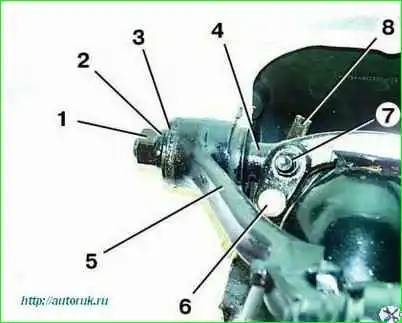
Unscrew nut 1 securing the lever to the axle, remove spring washer 2 and washer 3 from the axle.
Remove lever 5 from axis 4.
To make it easier to remove the lever from the axle, generously moisten the axle and bushing with brake fluid, while rocking the lever in a vertical plane so that the liquid passes between the axle and the bushing.
If even then it is not possible to remove the lever from the axle, it is necessary to remove the axle with the levers as an assembly by unscrewing two bolts 6 and two nuts 7 securing the axle to the front suspension beam and removing the adjusting plates 8 located between the beam and the lever axle.

Press rubber bushing 2 out of lever 1. If the levers were removed with the axle assembly, then first, holding the lever in a vice, press the axle out of the bushing.
When pressing out the axle, it is possible that spacer sleeve 3 will remain on the axle. In this case, the spacer sleeve must be removed from the axle by sawing it or carefully cutting it with a chisel.
Carefully clean the lever eye from dirt and possible remnants of the old bushing.
Moisten the new rubber bushing in unleaded gasoline and insert the spacer into it.
Press the rubber bushing assembly with the spacer into the lever eye using a mandrel.
Inspect the seat of the lever on the axis, if necessary, clean the surface with fine sandpaper.
Install the assembled lever onto the axle.
Then installation work should be carried out in the reverse order of disassembly. In this case, the head of the finger should be directed forward along the direction of the car.
Let's take a closer look:
Jack up the car and remove the front wheel.
We install a support under the spring cup and lower the car, compressing the spring. The upper rubber buffer should move away from the stop.

Use a 22mm socket to unscrew the nut
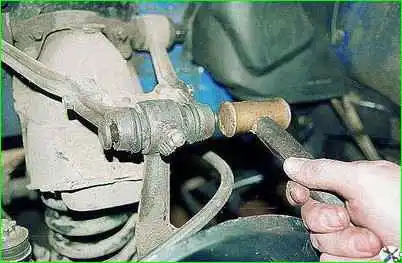
Use a copper hammer to knock out the top pin of the stand.
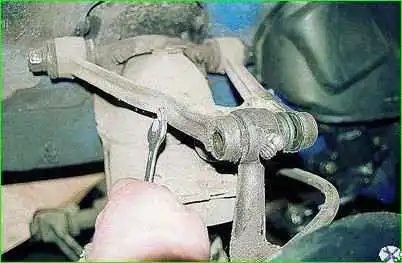
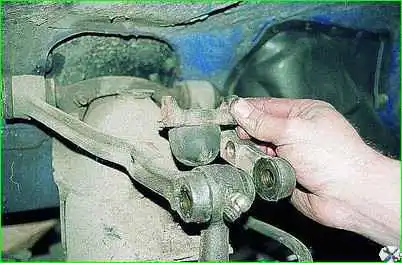
Using a 12mm wrench, unscrew the bolt securing the upper buffer to the lever and remove the buffer.

Take out the rubber sealing rings of the threaded joints.

Use a 24mm socket to unscrew the nut,
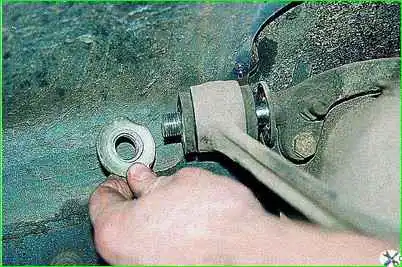
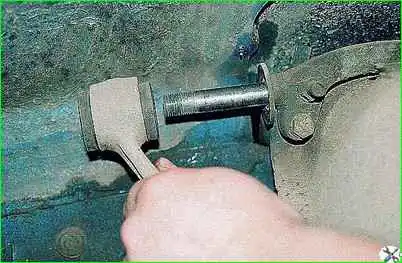
Remove the washer and remove the front upper arm from the axle.
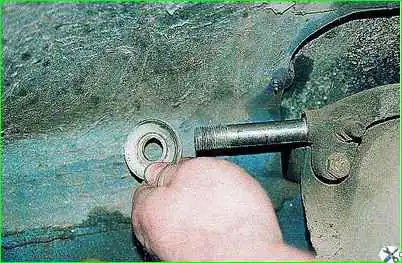
Remove the second washer from the axle.
The steering mechanism interferes with the removal of the second upper arm on the left side of the car, so we remove it together with the axis of the upper arms.
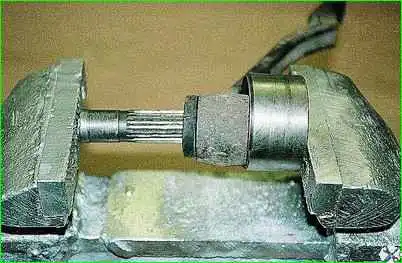
Using a vice, through a mandrel, squeeze the spacer sleeve out of the rubber bushing.
Then we squeeze the rubber bushing out of the lever in the same way.
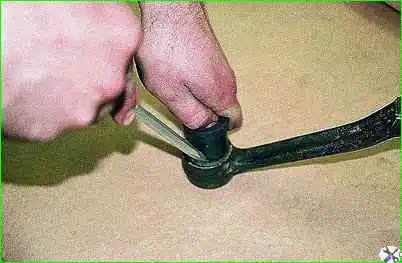
Wet the new bushing with gasoline or WD-40 and use a blunt flat-head screwdriver to insert its edge into the hole in the lever.
Pressing by hand, we finally press the rubber bushing into the lever.

We also press in the spacer sleeve.
This is easier to do by inserting a steel ball of slightly larger diameter into the hole in front of the spacer sleeve.
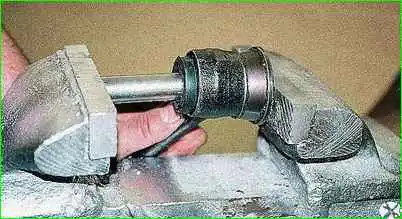
Install the lever in reverse order.
It should be borne in mind that the final tightening of the threaded connections of the levers is carried out only with the suspension in a loaded state.
Tightening torques: pin nut - 120-200 Nm (12.0-20.0 kgm), axle nuts - 70-100 Nm (7.0-10.0 kgm), bolts and nuts securing the upper arm axle - 44-56 Nm (4.4-5.6 kgm).
Check the alignment angles of the front wheels. (GAZ-3110 collapse)





